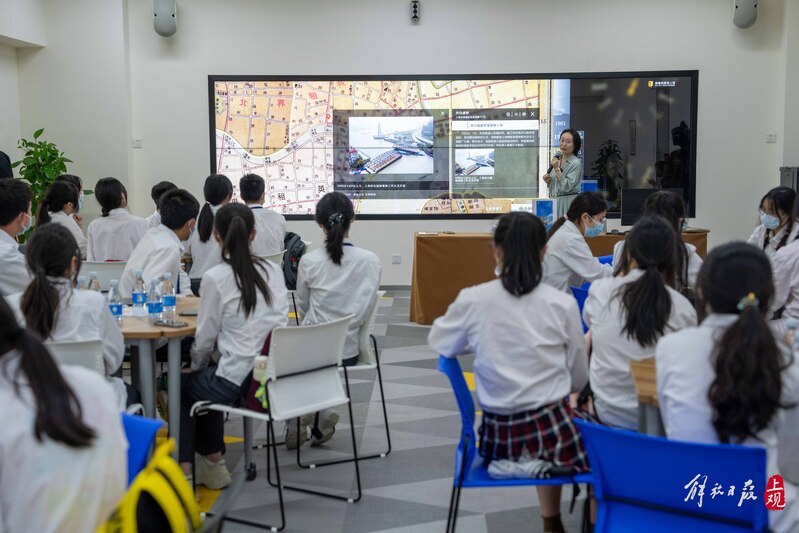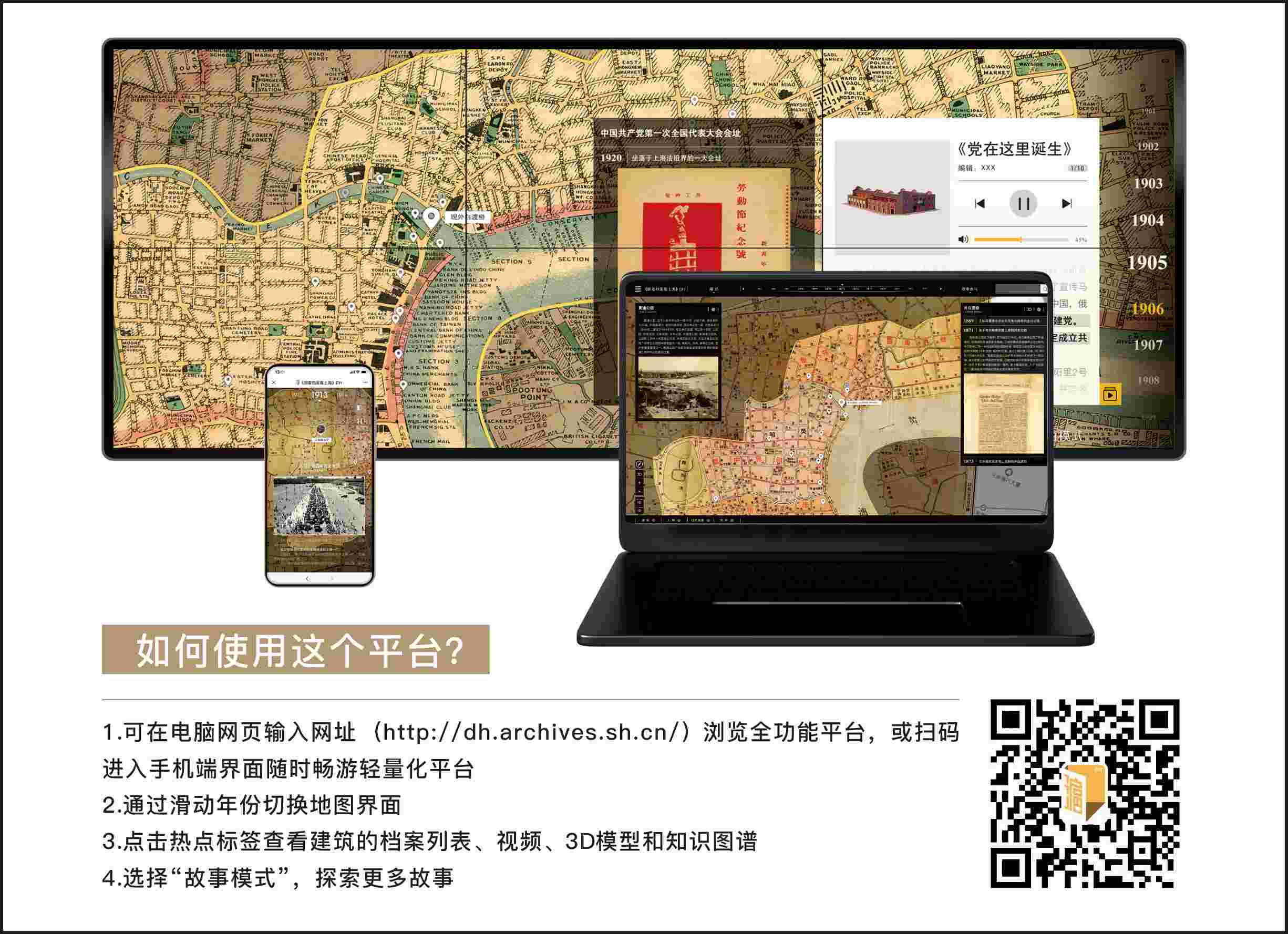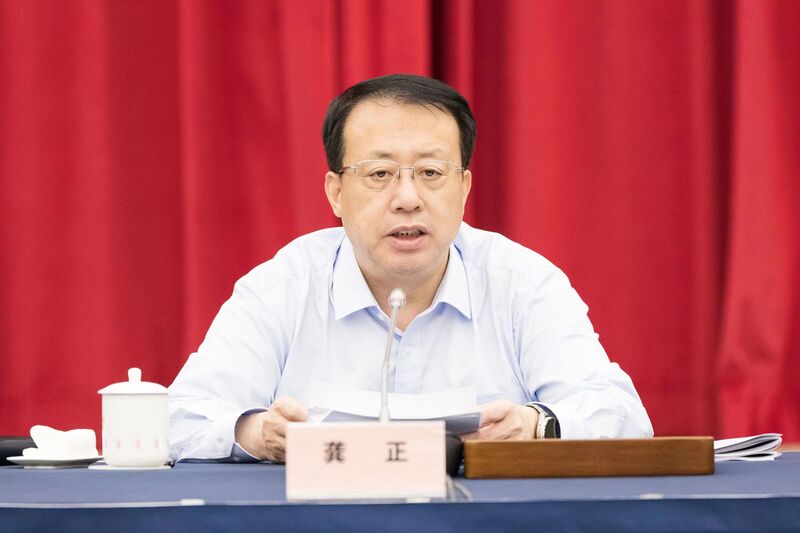Entering the "Metaverse" of urban history, the most trendy landmark of Shanghai people | Architecture | Shanghai
"During the Battle of Shanghai on August 13, what was the urban condition of Shanghai? Which landmark buildings were attacked by the Japanese army?" "Compared to maps from different eras, what were the characteristics of different regions after Shanghai opened as a port?" Yesterday, students from Shanghai Foreign Language School of Industry and Commerce walked into the new archives of Shanghai Municipal Archives. They sat around and scratched on their tablets, trying to find answers to these questions.
The answer lies in the tool they use - the "Follow Archives to View Shanghai" digital humanities platform. This platform was designed and developed by the Municipal Archives, relying on a massive collection of 170 million digital archive resources, and took more than a year. It was jointly presented by the Liberation Daily, Shangguan News, Huangpu District Archives, and other units. It has been officially launched during this year's Shanghai International Archives Day series of activities.
Citizens can enter the platform through two channels: one is to directly enter the website of the digital humanities platform "Follow the Archives to View Shanghai" in the browser to enter the page, or scan the code to enter the mobile interface; Another way is to open the platform through the news app or website entrance, and gain more digital archive cultural experiences.
How to "follow"
Understand these buildings, historical events, and the internal connections between the people living within them through diagrams resembling blood vessels and meridians

Open the web version of "Follow the Archives to View Shanghai", and a yellow old map stands out in front of you, which is Shanghai for a whole hundred years. "Let's look at the top left corner of the interface, where you can choose between 'Free Mode' or 'Story Mode'." Hu Jie, a staff member from the Service Department of the Municipal Archives, demonstrated to the students on site that in the default 'Free Mode' of the system, users can switch between time and space and explore.
The secret to switching time and space is hidden in the spatiotemporal geographic information system developed by the Municipal Archives. Dragging the timeline above the interface in "free mode" allows you to switch between more than 10 collection maps from different historical periods. These maps vividly depict the urban development of Shanghai from modern port opening to the new era in the past 180 years.
How to "follow the archives to see Shanghai"? Taking People's Square as an example, the reporter first adjusted the timeline to 1860, and then moved the map with the left mouse button to quickly find the "Racecourse/Shanghai Racecourse Association" hotspot tag on the map. Click on this tab, and the list of related files will appear on the right side of the homepage. Click on the map to display the files that are closest to the year on the map. From the early horse racing hall, the order of the Shanghai Military Control Commission to reclaim the horse racing hall as a public land in 1951, to the comprehensive renovation and completion ceremony of People's Park and People's Square at the beginning of its construction and opening up, and to the latest flag raising ceremony photos taken by our reporter... Through a series of graphic and textual materials, the past and present lives of People's Square are clearly visible.
In the upper right corner of the list, you can also click to view videos, 3D models, and knowledge graphs of the "Racecourse/Shanghai Racecourse Association". The system will automatically generate a visual map of archive associations for each building location based on the platform's relevant archive titles and explanatory keywords. Users can explore the relationships between building landmarks, historical events, and characters through the archive knowledge map.
The reporter saw in the graph with the keyword "Racecourse/Shanghai Racecourse Association" that the landmarks and events related to this keyword are presented in a radial pattern. Among them are building landmarks that have a clear association with it, such as the Shanghai Library. There are also some content that may seem unrelated to the keywords, but their correlation can be discovered through the graph, such as the Youth League. Reading the archives, it can be seen that after returning to the hands of the people at the racecourse, the Shanghai Municipal Committee of the Youth League called on young people to actively participate in the construction of People's Square. Through a map resembling blood vessels and meridians, one can understand these buildings, historical events, and the internal connections between the people living within them.

In addition, the platform also supports opening files in "story mode". "In modern history, there were three horse racing halls in the Shanghai Concession area..." With the voice reading, the historical scene of "From the Horse Racing Hall to the People's Square" slowly unfolded, and the Shanghai in the archives became even more vivid.
What to observe
The first phase of the platform mainly focuses on the intersection of "one river, one river" and surrounding areas, showcasing the transformation process of more than 50 important historical buildings
As the first batch of experience officers on the platform, Li Yifei, a student from Shanghai Business Foreign Language School, had a great time playing. "Many of the buildings here used to be memories of grandparents, but today I see their past appearance." In her opinion, the system interface is simple and easy to operate, and modules such as 3D models and knowledge graphs are cool and practical. She will recommend them to more students when she goes back.
"A thousand people have a thousand ways to play." Hu Jie said, "Follow the Archives to View Shanghai" has three main functions, including a spatiotemporal geographic information system, an archive knowledge graph, and a streaming story system, from which users can find content they are interested. At present, the first phase of the platform mainly focuses on the intersection of "one river, one river" and surrounding areas, showcasing the transformation process of more than 50 important historical buildings. Among them, there are 14 old red sites, such as the site of the First National Congress of the Communist Party of China, the editorial department of New Youth, Bowen Women's School, more than 20 buildings along the Bund, such as the French Post Building, the HSBC Building, the Customs Building, and other buildings along the Hongkou North Bund, such as Broadway Building, Shanghai Post Building, and other city landmarks, such as Chenghuang Temple, People's Square, the building of the old Ministry of Works, Garden Bridge of Shanghai, four major companies, and East Nanjing Road.

At the event, when introducing "Follow the Archives to View Shanghai" to students, the relevant R&D personnel used a vivid metaphor: it is not only a "tree of urban memory" that spans time and space, but also a knowledge treasure trove that can discover the mysteries of the city. By visualizing knowledge graphs, people can freely explore and perceive the connections between cities, events, and people, creating a sense of immersion.
At the same time, the platform retrieved relevant file content from the database, created and generated streaming media short stories through dubbing, music, etc., and launched many stories such as "The Birth of the Party Here", "The Changes of People's Square", "The Memory of the Old City - Chenghuang Temple" for the first time. The future platform will regularly launch new stories, allowing citizens to travel through time and space with just a tap on the screen, and perceive the spiritual core and cultural heritage of Shanghai as the birthplace of the Communist Party of China, the earliest modern city in China, and a people's city.
Facing the future
Invest more resources to continuously enrich the content of the existing areas of the platform, continuously illuminate more areas, and increase the number of points
"The construction of the digital humanities platform itself took more than a year, but the actual time we invested is much longer," sighed the project team members. In 2021, the book "Follow Archives to See Shanghai" written by the Municipal Archives Bureau was published. This book collects 14 landmarks in the history of Shanghai's urban development, with over 400 illustrated documents, maps, photos, and physical objects, including precious archival materials disclosed for the first time. The IP "Follow the Archives to View Shanghai" comes from this.

Moving forward, at the beginning of the 21st century, the Shanghai Archives initiated the digital transformation project of archival work. After more than 20 years of unremitting efforts, nearly half of the archives have been digitized. From this perspective, the digital cultural platform "Follow Archives to View Shanghai" cannot be separated from the research results such as "Follow Archives to View Shanghai" created by the Municipal Archives in recent years, as well as the multi-dimensional database that enriches the construction of archives in the collection.
The digital humanities platform built based on archives has precedent internationally. For example, the "Venice Time Machine" project, jointly launched by the Swiss Federal Institute of Technology in Lausanne and the University of Caf é scari in Venice, focuses on the development of urban overview archives and urban management archives. It digitizes a large number of historical documents and forms an information network through data analysis. Based on this, it models and restores real historical scenes, simulating the changes in geography, urban-rural areas, transportation, and architecture in the spatial dimension, achieving the goal of "using archives to take people back to the Middle Ages 1000 years ago in seconds.".
Can "Observing Shanghai with Archives" become a "Shanghai Time Machine"? The project team members believe that this depends on the investment of more resources. "The platform has only completed one phase of construction. We look forward to continuously enriching the content of the existing area of the platform, and also look forward to more areas being continuously illuminated and the number of points increasing in the future.". It is reported that, while ensuring information security, the platform will also open up channels for the public to participate in construction.




